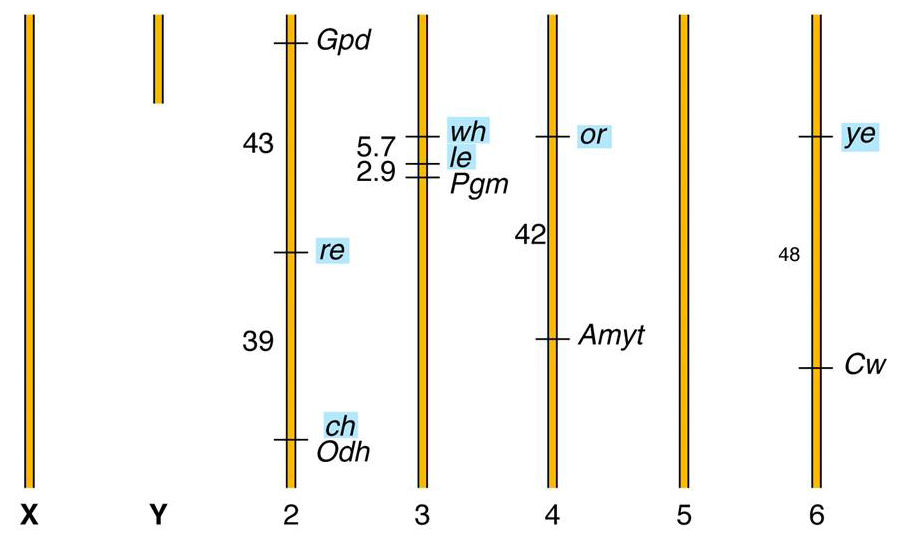

Genetic linkage map of the Screwworm Fly (Cochliomyia hominivorax) (2n = 12)
The North
American Screwworm fly (Cochliomyia
hominivorax)
is a Dipteran parasite of
mammals, including humans and cattle. The eggs are laid
in open wounds, and the screwworm larvae that hatch out
eat the necrotic tissue, which can cause severe illness
(myiasis) or death to the host. Eradication
measures have included large-scale release of sterile
male flies, and identification of insecticide-resistance
genetic markers. As there are multiple strains of
screwworms, biochemical markers can be used to identify
which strains are present in a particular area.
Phenotypic markers are shown shaded in blue, biochemical (allozyme) markers are unshaded. Numbers indicate percent recombination between markers.
Note for example the close linkage on Chromosome 3 between the locus for the enzyme Phosphoglucomutase (Pgm) and the phenotypic le and wh loci: presence of the latter in heterozygous recessive form can be monitored by screening for the Pgm allele. Note also that markers separated by ~50% recombination (Gpd - re, Cw - ye) will be difficult to distinguish from unlinked markers (50% recombination). Note also that each of the five autosomes are each about 100 cM long.
Phenotypic markers are shown shaded in blue, biochemical (allozyme) markers are unshaded. Numbers indicate percent recombination between markers.
Note for example the close linkage on Chromosome 3 between the locus for the enzyme Phosphoglucomutase (Pgm) and the phenotypic le and wh loci: presence of the latter in heterozygous recessive form can be monitored by screening for the Pgm allele. Note also that markers separated by ~50% recombination (Gpd - re, Cw - ye) will be difficult to distinguish from unlinked markers (50% recombination). Note also that each of the five autosomes are each about 100 cM long.